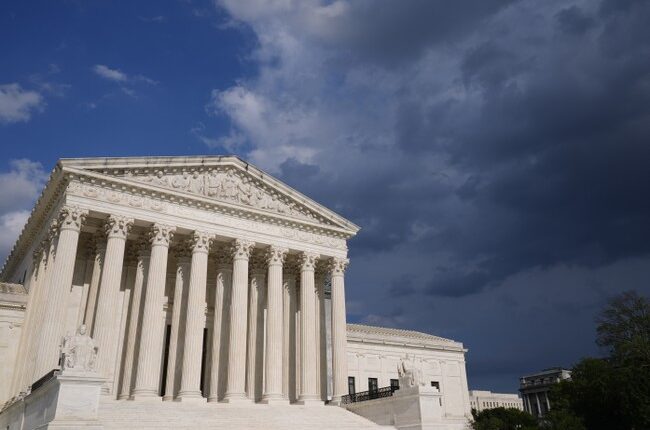
This term of the Supreme Court might be recalled as a pivotal moment, not due to a complete dismantling of the administrative state in one bold move, but rather for the significant steps taken to curb its overreach.
A series of rulings announced on Friday—from McLaughlin Chiropractic Associates v. McKesson Corp. to Diamond Alternative Energy v. EPA to FDA v. R.J. Reynolds Vapor Co.—illustrates the Court’s commitment to rebalancing the relationship between unelected regulators and the courts responsible for overseeing them.
What binds these verdicts is not a singular ideological motive but a collective acknowledgment that agencies exceed their constitutional boundaries when they emulate legislatures or evade judicial scrutiny. The recent actions of the Court emphasize the importance of keeping regulatory authority accountable and open to correction when necessary.
Let’s look at how these cases contribute to that goal.
McLaughlin Chiropractic Associates v. McKesson Corp: Restoring the Courtroom’s Role
In McLaughlin Chiropractic, the Court made clear that agency interpretations do not control private litigation. The issue was whether district courts must follow FCC interpretations of the Telephone Consumer Protection Act simply because those interpretations are subject to review under the Hobbs Act (also known as the Administrative Orders Review Act).
The Court said no. District judges must independently interpret statutes, even when an agency has already spoken. As Justice Kavanaugh put it, “When a statute is clear, it is the law—not the agency’s interpretation—that governs.”
This may sound technical, but it matters. Agencies have blurred the line between writing rules and deciding what the rules mean, and for too long, courts have deferred to that. By restoring the authority of district courts, McLaughlin puts judicial oversight back where it belongs.
This decision fits within a broader shift. It follows Loper Bright Enterprises v. Raimondo, where the Court ended Chevron deference, and shows that the justices are serious about limiting regulatory overreach.
Diamond Alternative Energy v. EPA: Opening the Courthouse Doors to Challenge Overreach
In Diamond Alternative Energy, the Court made it easier for businesses harmed by regulations to challenge them in court. Fuel producers brought a case against the EPA for approving California’s Clean Air Act waiver, arguing that it would reduce demand for traditional fuels.
The lower court dismissed the case, claiming the producers could not prove that automakers would go back to gasoline-powered cars if the waiver were thrown out.
The Supreme Court reversed that decision. The justices said that when a regulation predictably harms a business, even indirectly, that business has standing to challenge it. Justice Kavanaugh pointed out that limiting fuel consumption was the point of the waiver, and no one should need an economist to prove the obvious.
This ruling ensures that agencies like the EPA cannot hide behind procedural roadblocks. It fits with the Court’s efforts in cases like West Virginia v. EPA to hold regulators accountable when they overstep.
FDA v. R.J. Reynolds Vapor Co: Limiting Agency Gatekeeping on Who Can Challenge Rules
In FDA v. R.J. Reynolds, the Court pushed back on the FDA’s attempt to control who could challenge its decisions. The agency argued that only manufacturers could challenge its denial of premarket approvals. The Court disagreed and ruled that retailers, who are also harmed by these decisions, have every right to challenge them.
This ruling matters because it keeps agencies from deciding who gets to take them to court. When regulators pick their critics, there is no real oversight. FDA v. R.J. Reynolds reinforces a basic constitutional truth. Agencies do not get to close the courthouse doors to those affected by their decisions.
A Measured Course Correction with Broad Significance
None of these decisions dismantles the administrative state. Nor should they. What they do is draw clearer boundaries. Regulators should not act as lawmakers. They should not decide who can challenge them. They should not expect courts to accept their interpretations of the law automatically.
These rulings stand out because they are not driven by ideology. In fact, in some of these cases, Justice Elena Kagan, one of the Court’s more progressive voices, joined the conservative majority. That tells us something important. It suggests that Kagan recognizes, as the majority does, that unchecked regulatory power is dangerous no matter who holds it. If a progressive agency can go too far, so can a conservative one. The Constitution’s checks and balances are there to protect everyone.
Together, these rulings mark a shift toward restoring that balance. In our system, laws should come from legislators, be applied by judges, and not be dictated by unelected bureaucrats. That is a balance worth defending.

















